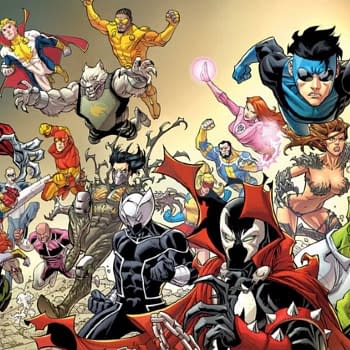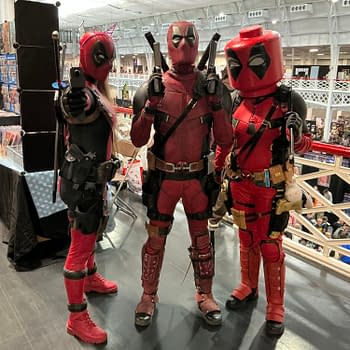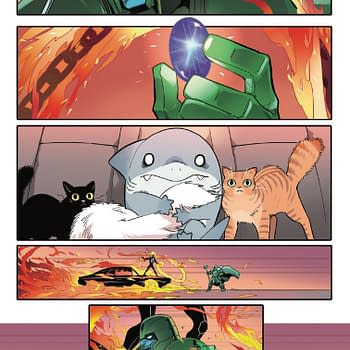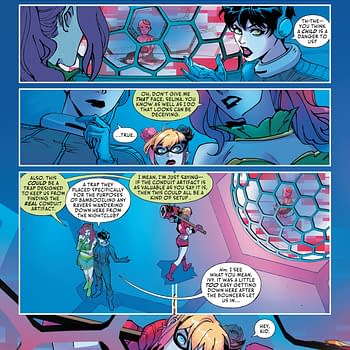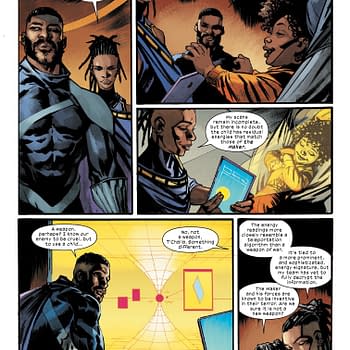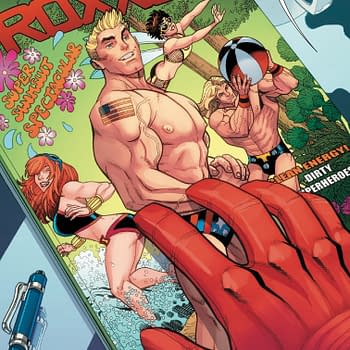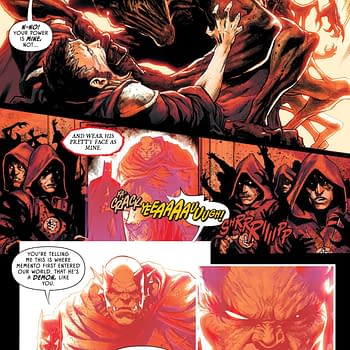Posted in: Comics | Tagged:
How Diamond Turned Florida Shrimp Liners Into Comic Book Backing Boards
Comic book backing boards. We've all got them, haven't we? In the days before slabbing, all collected comics had a thinnish sheet of white cardboard behind the comic in the mylar comic book bag to keep the comic book minty fresh and unbent.
But Bill Schanes, former VP of Diamond Comic Distributors, while touring Europe, has been sharing his memories and revealing histories, including just how the comic book board as we know it came to be. He writes,
Backing boards were just starting to gain widespread usage as a way to reinforce the already bagged comic books wouldn't bend, and also allow to transport the comic books in the long white boxes with rigid reinforcement. These traditionally came in shrink-wrapped bundles of 100 backing boards, with 10-bundles per master carton.
Jay Warmke, Diamond's Distribution manager in Tampa, Florida had helped to source a manufacturer who was making frozen shrimp liners at the time (shrimp being an important product line coming out of Florida). The shrimp would be processed at the various processing plants, and they wanted to have some type of white board inside the packaged shrimp, so the packs of shrimp would lay flat, and also with their white shinny side out, would help to highlight the shrimp in the best possible way.
Ironically, these shrimp boards had a totally different name, as they were exactly what our industry called backing boards. I had samples of the shrimp board and traditional comic book backing boards tested, as I didn't want to offer any item which would cause damage to the bagged comic books. Ironically, they were basically the exact same. That was interesting, but what I learned was there was "waste" at the end of each industrial roll of the yet uncut shrimp paper stock, and that this waste was actually being recycled for very little money. The waste was just a little larger than a backing board, so I discussed buying all of the shrimp board waste, and have it cut to our final specifications. This earned the factory far more than recycling was paying, and at the same time substantially lowered Diamond's cost.
A year or two later, I was thinking about the backing boards, and how they were packaged in bundles of 100, shrink-wrapped together, and I realized we could redesign the packaging of the 100 boards into a outer white box, with printing on them. In my mind, this would be a better way to sell bundles within the comic book specialty retailers stores, but as an innovation, we printed on the edges, with blank lines, so they could be used as mini storage boxes for collectors and dealers, as you could write on the outside of the box what comics were inside.
This packaging upgrade really helped Diamond double its backing board piece of our business, so much so that we were selling over 40 million backing boards each and every year for 10+ years to follow (we sold many, many more comic book bags, with a combination of polyethylene and polypropylene – I'll send out a separate note about the comic book plastic bag business shortly).
All from waste shrimp packaging- who knew!
Not us, that's for sure. Thanks for the education, Bill.








